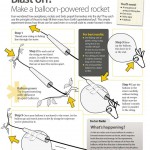A new evolutionary leap will occur by 2100, and Dr Henrik Frystacki tells you why.
Humans might meet a dramatic evolutionary leap once Earth’s population exceeds 10 billion humans in the year 2100. This kind of evolutionary step will differ from any of the previous evolution processes on Earth, which were caused by different natural catastrophes, and might lead to a new era that will have a direct impact on human society and common consciousness. The internet is just a small first step into this direction.
Professor Yuri Shankin, Lt.-General of the former KGB, and highly honoured chief executive and leading strategic thinker of FAPSI, the Russian Federal Agency for Communication and Information, devised about one decade ago the dramatic impacts of an upcoming population of more than 10 billion earthlings. I met General Shankin often in my position as president and CEO of Siemens Russia; and after jointly establishing in 1993 a committee with high-ranking members of the Russian government and Siemens’s executive board of directors, we took on the responsibility for the development of a Russian digital information and communication network. It was in those meetings that we discussed in detail the impacts of a human population exceeding 10 billion.
Shankin’s revolutionary arguments, elaborated for the state security agency with direct reporting line to Russia’s president, start with the evolutionary leap that has been caused by the connections of about 10 billion cells that brought out complex life forms on Earth, and further connections of 10 billion brain cells for a cerebral cortex, resulting in the development of human consciousness. Today our human brains have developed as many neurons as the quantity of the supposed 100 billion stars in our galaxy — our neural connections exceed this number by far.
For Shankin the next evolutionary leap will occur once the population on Earth exceeds the critical mass of 10 billion. His outlook describes the era as a new group consciousness across all borders of states that has the potential to result in a new kind of world order that is far beyond any of today’s imaginations.
Shankin’s considerations forced the Russian government to take serious precautions, especially when it came to information flow control… New official American attempts of getting hold of internet misuse and unwelcome foreign content are widely known by its abbreviations PIPA, standing for Preventing Real Online Threats to Economic Creativity and Theft of Intellectual Property Act, and SOPA, the Stop Online Piracy Act. In 2011 and 2012, PIPA and SOPA opened a wide arena of controversial public discussions.
On October 31, 2011, we officially reached the 7 billion mark of human population — three billion more and we’ll reach the 10 billion mark. However, the prerequisite for such a new kind of group consciousness is the efficient integration of the population through revolutionary innovations. This new kind of intelligence goes far beyond today’s simple applications of the global internet.
At the Technical University of Munich, Germany, there were already in the late 1970s fascinating studies about a generation of endogenous patterns in the brains of subjects of scientific research. The brains were stimulated by electricity. The subjects reported to perceive exactly the same type of pattern, like various types of circles and squares, independently of their country of origin or language, just depending on the type of electrical stimulation. This experiment showed the possibility to generate simple forms of group consciousness by electronic means with subjects that have nothing in common — not even language. The link of 10 billion people by more sophisticated intelligence has a huge potential of deep social impacts on mankind.
Despite the technological marvels of engineers, there is a chance that evolution could itself come up with biological communication organs for creatures in the far future. Is this science fiction only? Not at all, if we consider the amazing construction of an electric eel (Electrophorus electricus). Despite its name, the electric eel is not related to true eels, but is considered a member of the so called neo-tropical knife fish family. This fish can be found in sludgy fresh water, low in oxygen, in northerly and middle South America, along the Amazon and the Orinoco. It is capable of generating strong electric discharges, which it uses for both hunting and self-defense. Electric eels are astonishingly mainly air-breathers, with 80 per cent of the oxygen taken in by surfacing and only 20 per cent by their gills. The bio-electricity is produced by three abdominal pairs of organs (Main. Hunter’s and Sachs). These three organs consist of reconstructed and lined up muscle-like cells called electrocytes. The control of electrical current accumulates an electrical charge, giving this dangerous creature the ability to generate either low voltage or high voltage, just like connecting batteries in series or in parallel. Having located its prey, the fish’s brain triggers an electrochemical signal and sends it through its nervous system to switch on its electric cells. This allows positively-charged sodium ions to flow through, reversing the charges momentarily. Any sudden difference in electric tension causes an electric current. 5,000 to 6,000 stacked ‘electroplaques’ are then capable of accumulating 0.15 volts each to an electric tension up to 500 volts and 1 ampere of discharge current. The shock could be deadly for an adult human. Signals emitted by the Main organ and Hunter’s organ can be modulated at the rates of several hundred Hertz.
Long distance radio communication and the start of an unpredictable common consciousness of a superior species could start for such types of creatures right away — just add an innovative type of electrical high frequency organ or device. Having this in mind, large group consciousness is only a matter of time: a dramatic human evolution leap seems to be pre-programmed and may be linked to the population growth (10 billion people on Earth).







